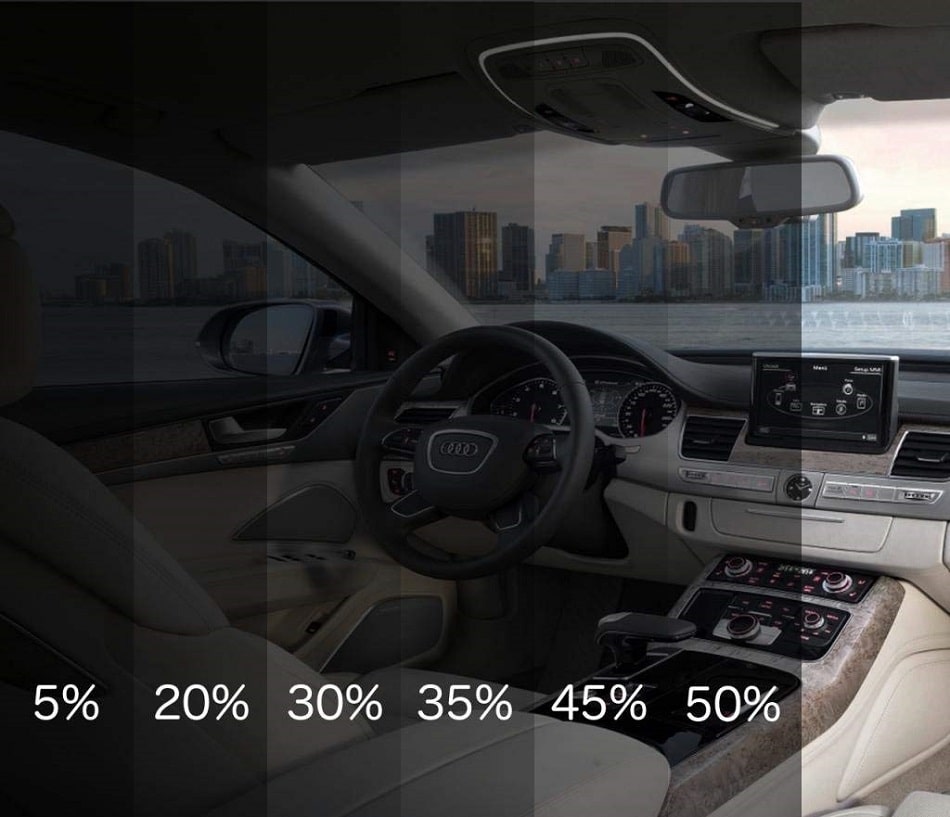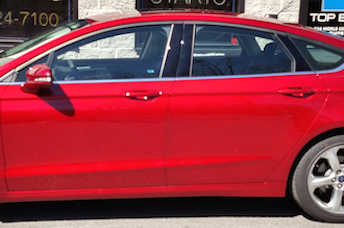
#Window tint levels windows#
You may not tint car windows with red, amber, or blue colors in California.In addition to restrictions on the darkness of a window tint, the California window tint law includes additional notable regulations for tinting: Rear Window: Any level of darkness is allowed on your rear window, but you must have dual side mirrors on your vehicle if you tint the back window.Back Side Windows: No restrictions on the VLT of side windows in the back.They cannot be tinted any darker than 70 percent VLT.


The 2022 California window tint law specifies tinting for both sedans and SUVs or vans as follows: So, you won’t be able to completely darken all the windows on your vehicle. The concern is that too dark a window tint impairs your driving by making it harder to see. Like most states, California restricts the amount of light you can legally block from entering the car. Oregon and California window tint laws specify the VLT percentage allowable to determine how dark is too dark when tinting windows. A 70 percent window tint allows a greater amount of light through the film. The lower the rating, the darker the tint color.įor example, a 15 percent tint only lets 15 percent of visible light through the film, blocking 85 percent of the light. The higher the percentage, the more light passes through the tint. The percentage measures how much visible light passes through the tint. Window tint is measured in percentages of Visible Light Transmission (VLT). It’s no coincidence that the most dangerous driving times are when visible light is reduced. With so many benefits, why do we have window tint laws? Because window tinting doesn’t just cut down on the UV rays but also on the visible light entering your car. They give your car (and by association, you) a sense of attitude and style.

Valuables won’t be spotted in a parking lot, making theft from your car less likely.
#Window tint levels drivers#
Increased Privacy: Darker windows are harder for fellow drivers or pedestrians to see inside your car.Accident Safety: Window tint applied as a film prevents shattered glass pieces from separating, minimizing the chance of flying glass shards.The tint can block up to 99% of UV, thereby protecting your skin. UV Protection: By blocking UV rays, window tinting extends the life of your car’s upholstery.This keeps the interior far cooler, especially in the hot summer months. Keeping Cool: Window tinting cuts out the amount of light and UV rays that enter your car cabin.There are several benefits drivers consider when tinting their windows: Tinted glass is an option you can usually only find directly from the manufacturer when you buy a new car. Most shops use film coating to darken your car’s windows. Film coating that’s applied to the window interior.There are three main ways to tint windows: You might choose to darken your windows for a few reasons - from adding visual appeal to reducing exposure to UV light. It can be applied to the windshield, back, and side windows. What is Window Tinting?Ĭar window tinting darkens the surface of the glass. We’ve put together this simple guide to help you learn about the care of your newly tinted car windows and the Oregon and California window tint laws. So, before you head to the auto glass shop to have your windows darkened, be sure to check local regulations. Vermont, New Hampshire, and New Jersey don’t allow any window tint at all. Window tinting laws vary from state to state. Still, it is essential to tint your windows in accordance with your state’s window tint laws.

Tinted car windows can add several benefits and a sleek look to almost any vehicle. For Safety and Appeal, Follow State Window Tint Law


 0 kommentar(er)
0 kommentar(er)
